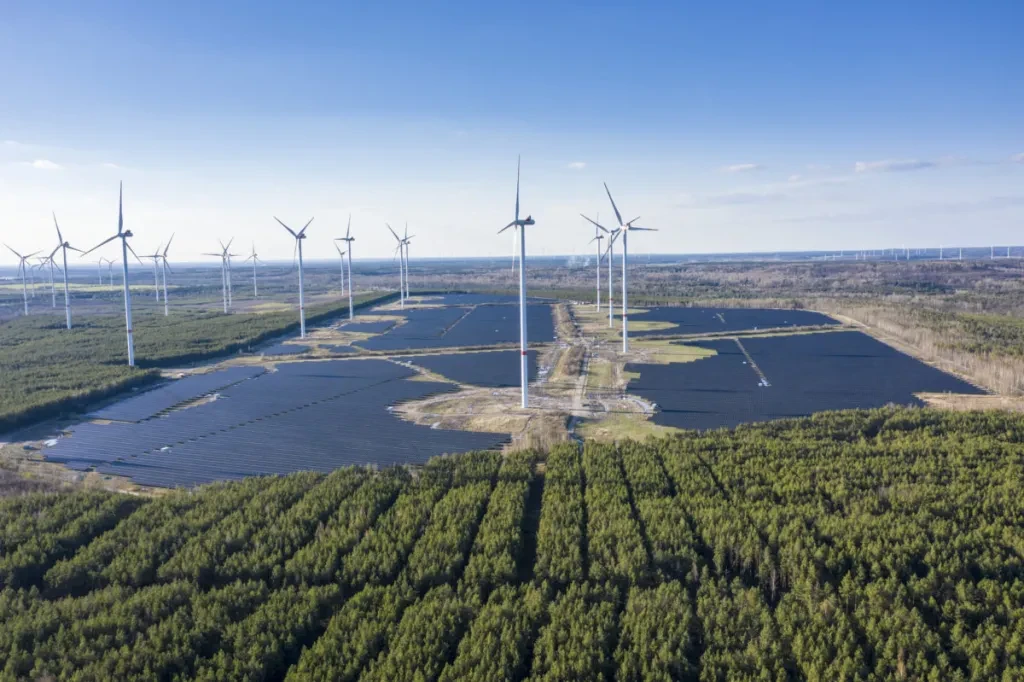Energy Charts and Agora Energiewende both report a production of 10.3 TWh of solar power last month. Almost 9.5 TWh of this was fed into the grid. In addition, there were more than 80 hours in July with negative electricity prices.

Image: GP Joule
From pv magazine Germany
With the considerable increase in photovoltaics in Germany, PV records are being achieved more rapidly. In July, installed PV systems produced a record total of 10.3 TWh, according to data from Agora Energiewende and Energy Charts from Fraunhofer Institute for Solar Energy Systems.
According to the Agorameter analysis, PV systems generated 2 TWh or 24% higher than in the same month last year. Overall, PV accounted for 27% of net electricity production — another new record. In addition, PV and wind power together generated 45% in July, significantly more than conventional power plants combined, which accounted for 39%. Overall, renewables therefore accounted for 61%.
However, Agora Energiewende also found for the first time that lignite-fired power plants were producing more electricity than in the same month last year. Previously, these figures had been declining for 16 months in a row. One reason is the continued low price of CO2. At €67 per ton, it was 22% lower than in July 2023, making lignite-fired power generation competitive with hard coal and gas. Overall, lignite-fired power plants accounted for 15% of net electricity generation, just ahead of onshore wind power at 14%.
Bruno Burger, head of Energy Charts, writes on the X platform that of the 10.3 TWh of solar power generated, almost 9.5 TW were fed into the grid. The highest value of solar power generation last month was recorded on July 29. At lunchtime, it was more than 48.5 GW — another new record. During this time, renewables accounted for around 99% of the load.
Rabot Charge has also evaluated the development of electricity prices. The average hourly price on the day-ahead market was 6.73 cents per kilowatt hour. It has been stable at a level between 6 and 8 cents per kilowatt hour all year. At the same time, the trend of many negative hours on the electricity exchange has continued. In July, the exchange electricity prices were below the 0 cent mark for a total of 81 hours. This is also a record in the recent past. According to Rabot Charge, there were no months in 2023 and 2024 with so many hours of negative electricity prices.
This content is protected by copyright and may not be reused. If you want to cooperate with us and would like to reuse some of our content, please contact: editors@pv-magazine.com.
Source from pv magazine
Disclaimer: The information set forth above is provided by pv-magazine.com independently of Chovm.com. Chovm.com makes no representation and warranties as to the quality and reliability of the seller and products. Chovm.com expressly disclaims any liability for breaches pertaining to the copyright of content.




